#How To Grow Grape Tomato Plants
Explore tagged Tumblr posts
Text
I cannot overstate the value of native 'weeds' and green manure practices. I've been having fantastic luck with my vegetable garden because I've let the native smartweed, goldenrod and falsenettle just go ahead and grow instead of picking every piece out, and then I just go in and lazily pluck out the pieces that are getting a bit too big for their britches every once in a while and let them fall where they stood; I even bring in clippings from around the yard to sprinkle in there, too. The result is my plants have protected roots, more water retention, more valuable mulch decomposing around them, and when I do need to clear a spot, there's only the easy-to-deal-with weeds in the way. Plus some of them make for great animal fodder! I don't have to remove everything I didn't plant, only pluck the tops by hand every now and again, and even if the weeds weren't giving back nutrition by decomposing, I have more nutrients than I know what to do with anyway because I have two compost areas and a worm bin inside (get a worm bin, seriously, they're great, and can fit under a sink)
I highly recommend checking your area for master gardener guilds, because they can be a wealth of information, plus a great resource for acquiring native species that are hard to find. Natives are better in literally every way; the only non-natives I have anymore are edible or larger pieces I keep for other utility or nostalgia.
Imagine if baking bread was a skill any person living independently in their own house needed to have at least a passing familiarity with, so there were endless books, blogs and websites about how to bake bread, but none of them seemed to contain the most basic facts about how bread actually works.
You would go online and find questions like "Help, I put my bread in the oven, and it GOT BIGGER!" and instead of saying anything about bread naturally rises when you put yeast in it, the results would be advertising some kind of $970 device that punches the bread while it's baking so it doesn't rise.
Even the most reliable, factually grounded sources available would have only the barest scraps of information on the particularities of ingredients, such as how different types of flour differ and produce different results, or how yeast affects the flavor profile of bread. Rice flour, barley flour, potato flour and amaranth flour would be just as common as wheat flour, but finding sources that didn't treat them as functionally identical would be near impossible. At the same time, websites and books would list specific brands of flour in bread recipes, often without specifying anything else.
An unreasonable amount of people would be hellbent on doing something like baking a full-sized loaf of bread in under 3 minutes, and would regularly bake bread to charred cinders at 700 degrees in an attempt to accomplish this, but instead of gently telling people that their goal is not realistic, books claiming to be general resources would be framed entirely around the goal of baking bread as fast as possible, with entire chapters devoted to making the charred bread taste like it isn't charred.
Anyway, this is what landscaping is like.
#the bane of my existence is non-native shrubs idiots planted because 'ooh shrub'#chinese privet has become an emergency in my area because of how prevalent it is even in undisturbed areas#going on crusades against it has been valuable for me though; it makes for decent wattle after some processing#and I've been pleased to uncover lots of neat natives#we have some pretty healthy populations of the endangered american elm and redbay now; and the redbay is delicious#not to mention lots of ferns; lizardtail; wild grape; wild blueberry; wild blackberry#I use the plantnet app for id'ing things and it's led to many wonderful discoveries about natives#and lets me know I don't have to bother removing a lot of stuff#like the creeper that apparently can be cultivated to grow on houses on purpose#because it climbs using sticky pads instead of damaging with tendrils#so now we're just letting that go and it's insulating the house#the only thing really giving me trouble now is this weird invasive shit in the yard that probably wormed in on birdseed#I don't remember the name but it's a cordage plant that gets waist-high if allowed and is damn near impossible to pull up#I've made some headway clipping it in bulk and teaching the dogs to pull it up but it's still kinda overwhelming#hopefully I have a new secret weapon; The Goose#she was still rather small when the stuff bloomed last year and while the animals are disinterested in the leaves they seem to be ok with#the flowers#so hopefully this lean mean and long eating machine can keep seed spread from being a problem#anyway#yeah#natives are the best and get birds and worms#I don't even need to turn the compost because the chickens do it already#also I been experimenting with growing fullsun plants in part shade and planting edibles in weird places or upside down in hanging pots#and it all seems to be working good!#I probably have literally 2 dozen tomatoes in random places now#I keep trimming them and dumping the trimmings in pots and they keep growing
19K notes
·
View notes
Text
The (Real) Stardew Valley Farm Update 2024
I’m wrapping up my third year trying to grow everything from Stardew Valley in our yard, with substitutions as needed, preferably with Midwest USA native plants.
I’m continuing to battle the invasive plants (why won’t the honeysuckle and thistles stop?????), beg for truckloads of woodchips (Google decided our address isn’t real anymore), and deal with a body and brain that makes going outside impossible sometimes (the past two years have been rough medically). But despite all of that I still managed to make a ton of progress!
Here’s how things stand as of now. If you’re looking back at previous posts you might notice some differences, but that’s mainly because things I planted died (drought + medical crises don’t bode well for newly established plants). I’ve also added the additional crops from the new update.
2021
Amaranth - Native white amaranth
Grape - Native riverbank grapes (so many grapes). I’m hopefully going to successfully propagate some cuttings from the neighbor’s green cultivated variety
Dandelion - Obviously
Maple Tree - Native silver, red, and sugar maples
Pine Tree - Douglas fir
Apple Tree - Three old apple trees of different varieties in very rough shape. I’ve been working to prune them up and two are looking a lot better. I’d love an Enterprise apple tree at some point
Coffee Bean - Chicory (a naturalized plant commonly used as a coffee substitute)
Salmonberry - Native black raspberries since salmonberries aren’t from around here, although I really want to add raspberries of various colors in the future
Starfruit - Native wood sorrel
Cave Carrot - Queen Ann’s Lace, AKA wild carrot
2022
Kale
Rhubarb
Strawberry - Both cultivated and native
Tulip
Radish
Tomato
Eggplant
Fairy Rose - Native prairie rose
Cranberries - Native cranberry viburnum
Orange Tree -Native persimmons, which produce orange fruit
Daffodil
Spring Onion - Native nodding onions
Spice Berry - Native spicebushes
Wild Plum - Native plums
Crocus
Cherry Tree - Native black cherries and nonnative bush cherries
Banana Tree - Native pawpaws, which are also known as Indiana bananas
Sweet Gem Berry - Native Juneberry (Downy Serviceberry)
2023
Garlic - Native wild garlic
Blueberries - I planted three varieties and only one survived. Don’t shortcut your bed preparation, friends
Wild Horseradish - Not wild, but contained with my mint
Hops - Teamaker hops which is good for tea since we’re not alcohol fans
2024
Blue Jazz - Native Ozark Bluestar
Beets
Apricot Tree - Native passionflower vine, also known as wild apricot
Sunflower - Both native and non-native sunflowers
Pumpkin
Cactus Fruit - Native prickly pear cactus
Melon - Cantaloupe
Oak Tree - Native dwarf chinquapin oak, which took me forever to get
Hot Pepper
Palm Tree/coconut - Native palm sedge
Poppy - Native purple poppy mallow, after other native poppies failed. I still want to grow bread seed poppies, though
Corn - Tried some gorgeous colored corn and popcorn that didn’t grow great but they did grow!
Green bean
Hazelnut - They’re supposed to be easy to grow but they do not like me. Third time’s the charm, right?
Carrot
Summer squash
Powder melon - I decided to do honeydew melon because it’s kinda powdery and I don’t really have any other ideas
Planned for 2025 and beyond
Potato
Pineapple - White strawberries (pineberries)
Winter Root - Hopniss, a native root vegetable
Red Cabbage
Artichoke - Native Jerusalem artichokes
Yam
Bok Choy
Leek
Fiddlehead Fern - Ferns do not like me
Blackberry
Crystal Fruit - Probably honey berries, which produce fruit earlier than anything else
Ancient Fruit - Native Aronia berries. They’re blue(ish) and have lots of antioxidants so you live to be ancient
Tea Leaves - Native New Jersey Tea bush. The previous ones were murdered by rabbits
Mango Tree - I thought one of our pawpaws was a variety called mango but I was wrong
Ginger - I want to try growing native wild ginger again
Rice - Native rough-leaved rice grass
Wheat - I have some gorgeous ornamental blue wheat seeds
Summer Spangle - Possibly native prairie lily? I was unsuccessful growing it from seed this year but maybe in the future
Parsnip - I can’t get them to germinate to save my life but one day I will be successful
Sweat pea
Holly - Native winterberry holly
Mushrooms - I'm just gonna ignore varieties and try some plugs or similar
Peach - Vine peach. It’s a melon, and more doable than a tree
Mahogany Tree - I think I’ll resort to mahogany nasturtiums
Broccoli
Pomegranate Tree - I could try Russian pomegranates?
Taro Root - I would have to plant it in pots
Snow Yam - Not actually a yam but maybe native sweet potato vine?
Qi Fruit - Very creepy, not sure what to do with this
Over halfway there! If anyone has suggestions for plants please let me know because I’m still stuck on a few and very open to alternatives.
In other news, I’m making Stardew Valley Fair displays with cross stitch patches for each of the items I’ve added that year. I’ll have to post pics of those at some point.
#the (real) stardew valley farm#the habitat ring#gardening#stardew valley#don’t be a petaq grow native plants#I am making the best life decisions and this is definitely worth it
22 notes
·
View notes
Note
Imagine RolloYuu taking care of a baby goat. 9/10 very cute but loses a point cause it keeps trying to eat the grape vines and tomato plants
ROOOOLLLLLLLLOOOO

I AM SO HORMAL ABOUT HIM I SWJEAR. I AM COMETELT SANE
I read this as you being so hormonal about Rollo I am so sorry Confused. Either way same I am so hormal about Rollo too (ᵕ—ᴗ—)
Honestly Rollo could use a bit of farm work. He hates being dirty so it would take a lot of exposure therapy for him to get used to a whole ass farm, but rolloyuu with a little garden where they grow stuff to cook with is so cute. It loses that point for eating the tomatoes and grapes but how happy you are around it is what makes up those 9 points because it's so damn cute. It's nice to see you peaceful compared to how stressed you were when you met, he hopes he can preserve that.
And continue ignoring any role he played in causing that stress lol
35 notes
·
View notes
Text
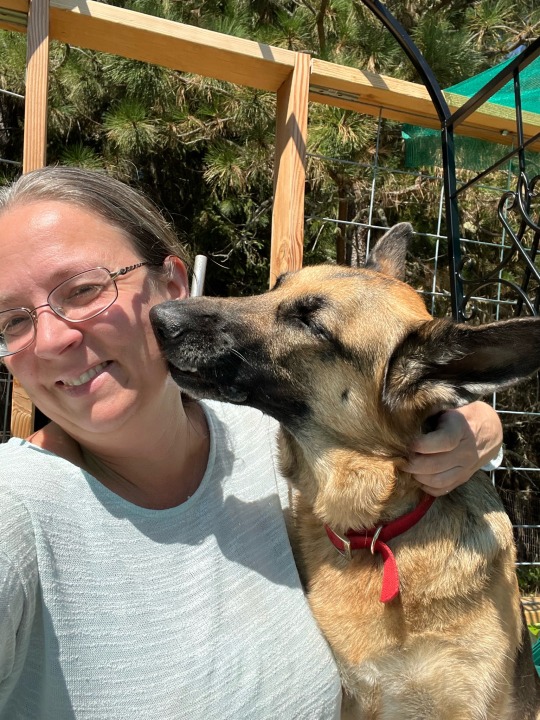
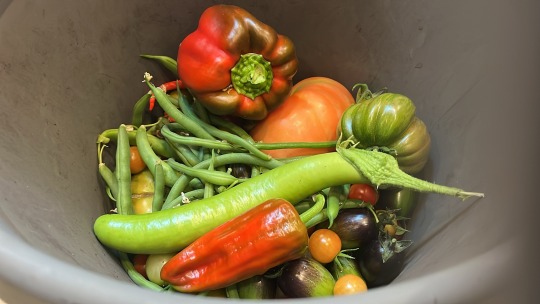


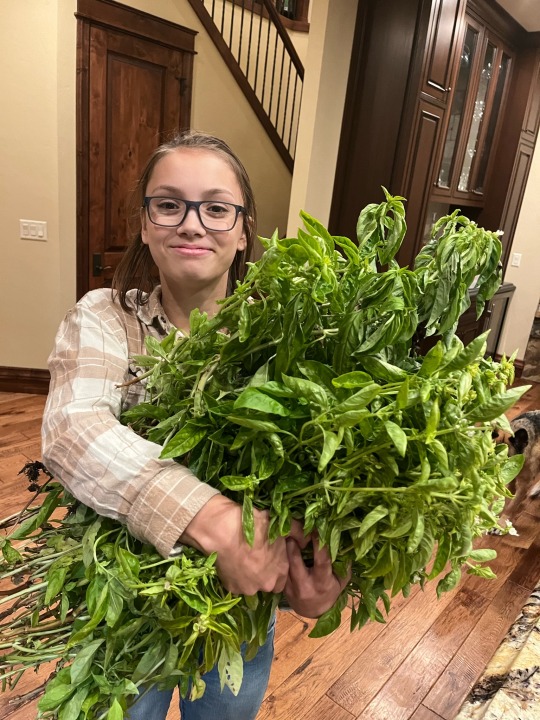
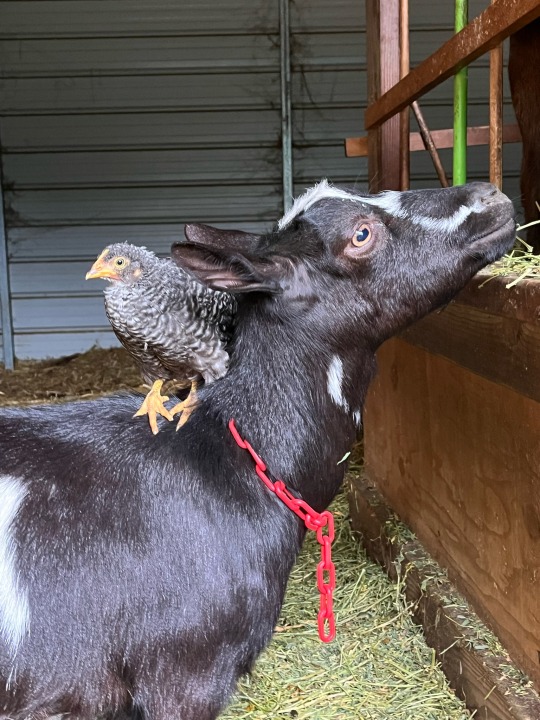
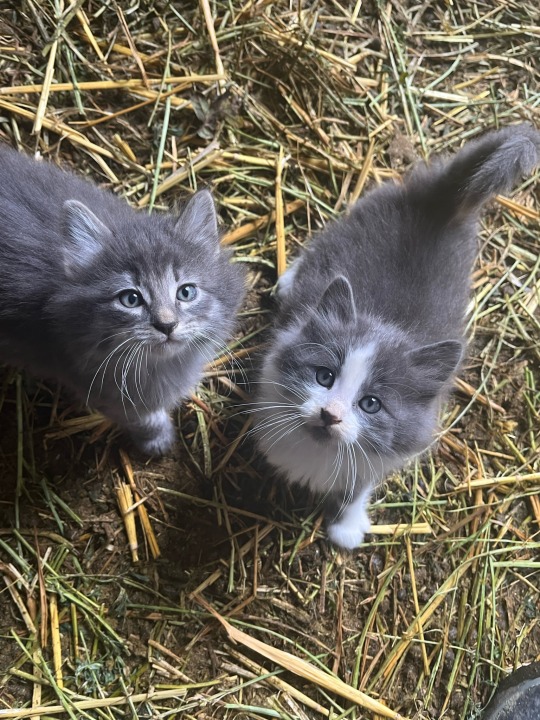
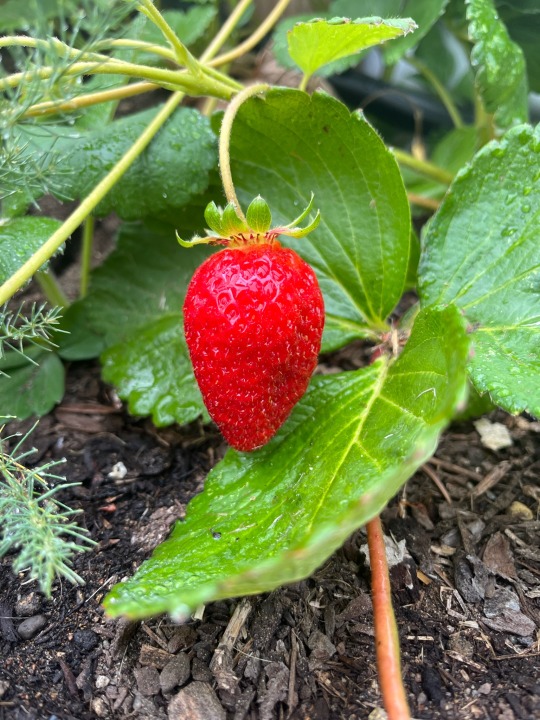
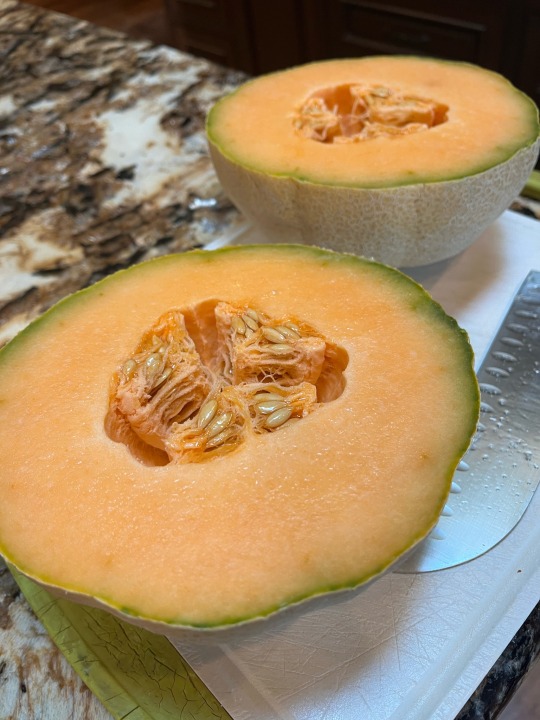
It’s been a bit! I’ve deleted my Twitter but I am keeping my Tumblr, and I thought I’d give a brief look at what we’ve been doing.
Just over three years ago, we started on a never-ending journey toward self-sufficiency. I have learned SO much since then and there’s still so much to learn.
We raised our first pigs this past year and just sent them to butcher, though we will likely do the deed ourselves next time. We have about 25 dairy goats, which we breed, compete with, and milk. I make cheeses, yogurt, sour cream, butter, and ice cream. We also sell some of the milk. We have about two dozen chickens at the moment after butchering roughly half of them. Next year we intend to drastically up that number and add butchered farm-fresh, never-frozen chickens to our offerings, along with eggs.
We built a massive raised bed garden which produced a ton of… well, produce! On top of your usual tomatoes and peppers, we had a huge variety of herbs, cabbage, broccoli, cauliflower, asparagus, strawberries, nasturtiums, chard, Brussels sprouts, peas, beans, lettuce, spinach, carrots, potatoes, onions, garlic, chickpeas, pinto and black beans, grapes, rhubarb, figs, artichoke, melons, squash, cucumber, buckwheat, blueberries, cranberries, pumpkins, bay laurel, lemongrass, and amaranth that all produced for us this year. Obviously some did a lot better than others but we are experimenting with unusual varieties that better withstand extreme temperature and drought.
We use 100% water capture for our plants and animals, though we did run out once this year and had to truck in some water. We also have a large solar array that covers most of our electrical use.
While I am planning to write again very soon, what I’m planning to write next is a cookbook of difference recipes using chèvre (aka goat cheese). I’ve experimented with it a lot, as I frequently have a lot of it, and I’ve got everything from drinks and soups to main courses and desserts that I make all the time.
We pressure and water bath can, dehydrate, and (soon will!) freeze dry goods. I’ve tried - and failed - at making a sourdough starter, but Dan has had great success making mead.
All of this is to say, if any of you have questions or want advice on how to be a little more self sufficient (even if that just means growing some herbs in your windowsill. Start where you’re at!!), I’m always here to ask questions of or tell you what lessons I learned the hard way.
My kids are great and I’m super proud of all three of them (youngest is a foster kiddo who has been with us over a year). I won’t be discussing them online anymore, with very very few exceptions, for their safety.
❤️
10 notes
·
View notes
Text
Hi everyone I’m sorry I haven’t updated as much as I planned, but I thought I’d share pics of how everything’s going in my garden (6/23/24)
The tomatoes have exploded and there’s lots of flowers. I’m hoping it’s not too hot and we actually get fruit this year (last year got so hot our tomatoes didn’t even flower during the normal growing season).


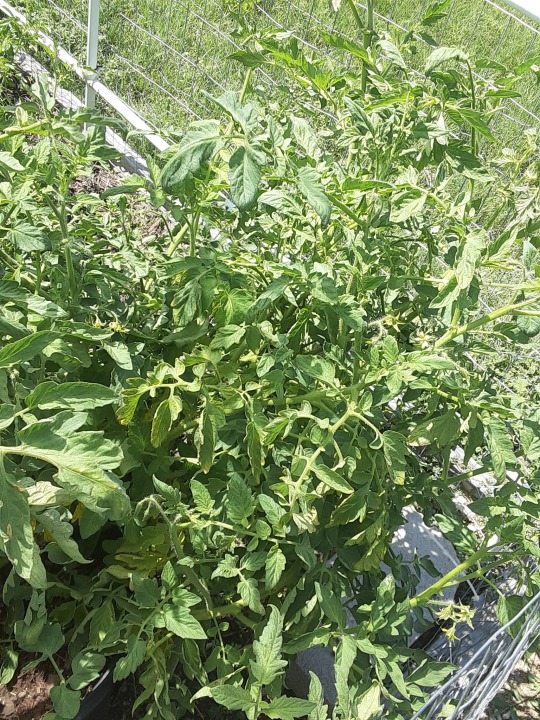
Next is the corn, which are also doing really well. It’s the sweet corn variety. Funny story, I planted the corn seeds without knowing you kind of need a lot to get a good crop because it’s wind pollinated. However, we have about 10 mature stalks and I’m hoping to get at least a small harvest. A few of the stalks are taller than me (5’3”/160cm) and one of the ears growing already has silk growing out of the ear.

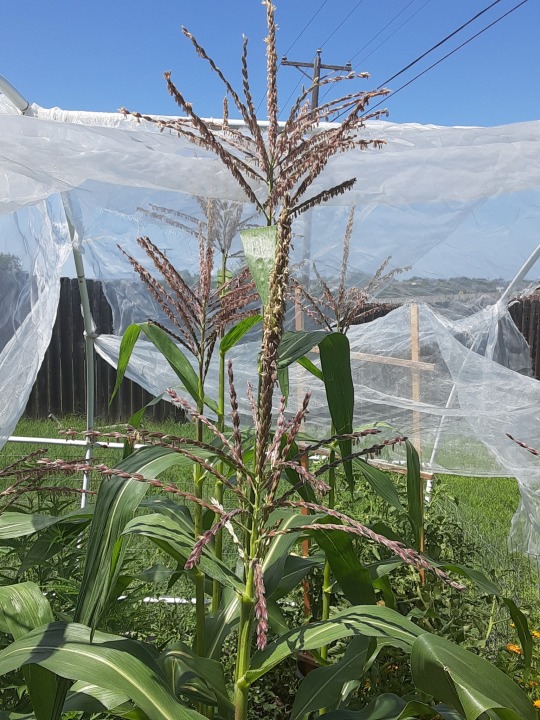

Next are the cucumbers. One of the plants has a few eggs on the bottoms of the leaves so I used some Sevin dust. I’m hesitant to use neem oil because I’ve noticed lots of ladybugs in the garden and don’t wanna kill them.




The carrots are doing well after being transplanted. Unfortunately I don’t remember when I started the seeds so I’m not sure if they should be farther along by now (I believe I planted around late April/early May—late for seeds I know but I’ve got a long growing season and few frosts).
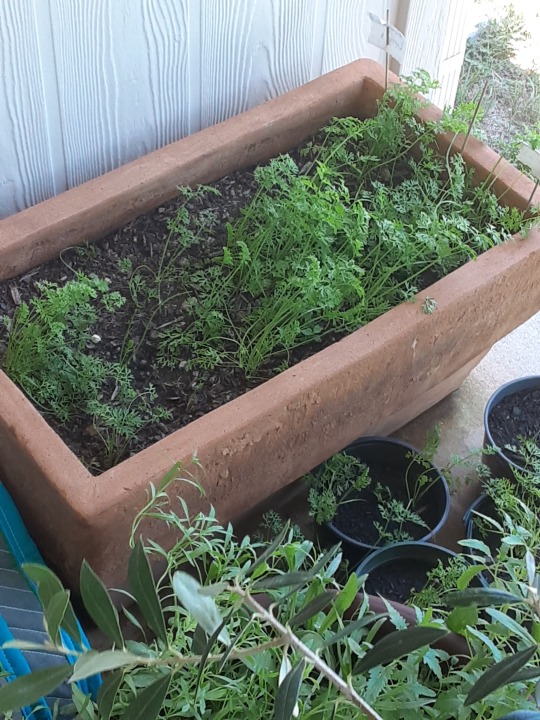
The various fruit trees/bushes/shrubs are doing well. Pictured are a thorny blackberry vine, an olive tree, a papaya tree, and a babcock peach tree. Everything is doing amazing. The blackberry is producing, the 4 peaches are growing and changing color while the olive, fig and papaya have been putting in some major growth/establishing.

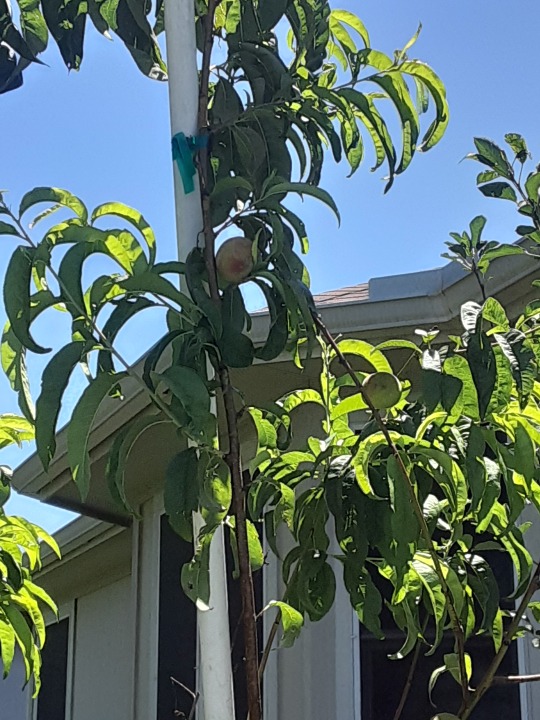



Last is the melon patch. It’s also exploded and there are so many watermelons throughout the whole patch of varying sizes from bb-sized to the one pictured with my hand. I didn’t see any cantaloupe yet, but there’s lots of flowers. I haven’t actually gone into the patch due to how crowded it is (I’m hoping if we do get some we’d be able to see them when they get big enough). I’m estimating we have between 12-15 watermelon at least so far.



However, not everything is doing so well. The rabbits have been so destructive, they killed my producing pole bean, the peppers I transplanted into the ground and most of the radishes, leaving 2 left for us (I did start new seeds though because radishes are some of the quickest vegetables you can grow from seed to harvest).

For things I didn’t cover like the grapes, blueberries, raspberries, guava trees, the apple tree, the lemon tree, various flowers, onions, potatoes, and pineapples, they are all doing good as well. I also wanna add that I did start new bush beans/pole beans as well as various kinds of peppers (jalapeños, hot salsa blend peppers, golden bell peppers) in containers to make up for the ones that got chewed. Hopefully those will make a nice fall harvest. The potatoes are almost ready to be harvested and the blueberries and raspberries have had berries ripen one at a time due to how small they are (this is the first year for berries).
As for other things I have planned, I have a few art pieces I’d like to post if that’s something y’all are interested in. I also would love to talk about my experience with gardening and mental health but any and all posts related to that will be labeled with appropriate trigger warnings.
Thanks for all the support with likes/reblogs. Feel free to come lurk, talk, vent, ask, whatever. I just wanna inspire others that think they cannot grow things that they can. If you’d like to talk I mostly would like to talk about gardening/plants/mental health and how it impacts us as humans.
Happy growing🌱🌿💙
#gardening#garden#garden update#gardencore#gardeningcore#melon patch#so proud of the watermelon#really everything because we did almost everything from seed this year#to save money and help with buying perennials like blueberries and fruit trees#instead of transplants that are like 5-10$#planting things from seed is so satisfying#like I turned a hard dry thing into a living thing that gives me food#vegetable garden#fruit garden
11 notes
·
View notes
Text
Caelwynn's Mod List for Stardew 1.6 - Gameplay/Quality of Life (pg 2)
Page 1. Page 2. Page 3.
No Fence Decay Redux — never worry about needing to fix fences ever again.
NPC Map Locations — another must-have mod. Shows you the locations of NPC in real time on your map.
Part of the Community — gives small friendship bonuses based on your relationships with NPCs' friends/families, times they've witnessed you talking to/giving gifts to others, and whether you're buying at their shops.
Platonic Partners and Friendships — for if you wish you could have an NPC room with you without the all that icky marriage stuff
Polyamory Sweet — for if you wish to keep a harem and/or have a roommate in addition to your spouse and/or have a commune of nothing but friends.
Quest Time Limits - Continued — a configurable mod that allows you to extend the amount of time that quests last for.
UI Info Suite 2 — overhauls the game's user interface.
Wear More Rings — lets you wear more than two rings. I'm greedy.
Little Red School House — adds a quest line to restore a school house so that Penny no longer teaches in the library.
Yet Another (Balanced) Quality Goods Mod — adjusts the quality of artisan goods based on the quality of ingredients as well as adjusting the profit accordingly.
Blue Eggs and Golden Mayo — allows you to make blue eggs/blue mayo from blue chickens, and golden mayo and ostrich mayo.
Ferngill Fashion Festival for 1.6 — adds in a series of heart events for Emily and a new festival.
Farmhouse Visits — allows you to set a configurable chance for NPCs to decide to visit your farmer.
Nondestructive NPCS (Unofficial update) — prevents NPCs from destroying your decor/items if they're blocking the NPC's path.
Brown Cows Give Chocolate Milk — Exactly what it says. Also allows you to make chocolate bars from chocolate milk.
Mako's Spam Mail — adds in a plethora of spam mail/advertisements/chain mail that you can receive each day. It makes me cackle at least once each play sessions.
Better Junimos — allows Junimos to automatically plant crops, fertilize, water plants, harvest forage, clear dead crops, and NOT harvest your flowers.
Starfruits Will Regrow — turns starfruits into a plant that produces throughout the season ala tomatoes or grapes.
No Soil Decay — prevents tilled soil from reverting if it doesn't have a plant in it overnight.
Self Serve for 1.6 — allows you to buy from shops even when their owner is away at aerobics or otherwise unavailable.
Waterproof Items — items that fall from trees float in the water instead of sinking, allowing you to collect them.
Lovely Digspot — changes the appearance of digspots to make them easier to see. I'm blind as a bat and this is INCREDIBLY helpful.
Greenhouse Sprinklers — allows you to eventually purchase overhead sprinklers from Robin so that you can maximize your growing space.
Better Crafting — an extensive overhaul of the crafting system. I mostly use it for the ability to bulk craft.
Magic Workbench — gives your workbench a much farther reach with regards to your chests.
Better Chests — allows for better organization and search/filtering capabilities for your chests.
Bigger Backpack — allows you to purchase an additional row of storage space in your backpack.
Event Limiter — limits the number of events you can see in a day, plus how many you can see back-to-back. Configurable.
Relocate Farm Animals — allows you to easily reassign what barn/coop/hutch animals are in.
Colored Seeds for 1.6 — changes the color of seed packets to reflect what season(s) they grow in.
Social Page Order Redux — gives a filter function to the social page so you can see them divided out in different ways.
Schedule Viewer — pulls from game files to show you where NPCs are going throughout the day and at what time.
It's Still You — the mirror in the bathhouse quotes an iconic line from Undertale.
What Do You Want — provides in-game lists of requirements to complete different parts of the game, excluding what you've already completed. Lists include the community center, Grandpa's evaluation, golden walnuts, and various achievements.
Mail Services Mod — gives you the capability to mail gifts to NPCs, as well as mail off your tools for upgrade and receive them from Clint once they're done.
The Masterpost for all of the mods is located here.
#caelwynn's mod list#stardew valley#sdv#stardew valley mods#stardew mods#sdv mods#modded stardew valley#stardew 1.6#stardew QoL mods
11 notes
·
View notes
Text
okey dokey!!! my little object (?) world is still in development but i really should share it with you all... (especially @mumpsetc so i'm tagging you!!) here's a little blurb on botanica!!!!
so this is a peaceful planet filled with sentient fruit! yay!! if you'd like to learn more, read below :D

in botanica, as fruit ripen on their plants, the plant material grows inside of the fruit, as if a miniature version of the plant has grown into it - botanican fruit possess a circulatory system of xylem and phloem within their flesh, with stems and vines growing out to form appendages (fig 1). all botanicans have leaves on at least one appendage, which they use to photosynthesize. aside from this energy from the sun, botanicans also drink water, which is taken in with a root tongue, and consume soil, from which nutrients and moisture are absorbed in a stomach-like organ. in doing so, botanicans effectively keep themselves "fresh" and/or "ripe", meaning that the life of a botanican fruit off of the parent plant is longer than that of a corresponding fruit in our world. all botanicans do eventually pass, and when they do, their bodies decompose and the seeds within them have the chance of growing into plants that will create more botanicans.
botanicans, like our fruit, come in different species, but those species are grouped into four categories: roaming botanicans, which are vine fruits (melons, tomatoes, squash, grapes), coasting botanicans, which are tropical fruits (bananas, papayas, pineapples, starfruit), floating botanicans, which are berries (raspberries, strawberries, blueberries, blackberries), and soaring botanicans, which are tree fruit (apples, pears, peaches, cherries). citrus fruits are in a subcategory between coasting and soaring botanicans. (all of these category names are subject to change though!!)

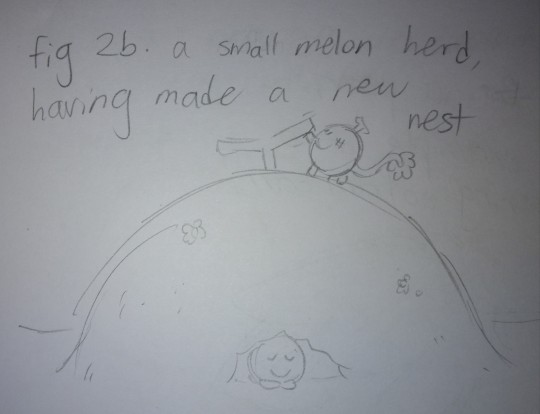
roaming botanicans are quadrupedal (four vine legs) with a prehensile vine-and-leaf tail (fig 2a); they live in sibling herds (usually small, but can vary in size) and roam around the landscape, without any designated leader among them. most roaming botanican species follow the sun year-round, and so avoid winter; in their constant migration they periodically stop to rest at hills, under which they burrow to make a nest. after making a nest under a hill, a herd will stick a branch at its peak so, after they leave, other herds will know that that hill can be used as a nesting site (fig 2b). some roaming botanicans have evolved to have particularly thick rinds, and so are more cold-resistant, and so opt not to constantly migrate, instead living more sedentary lives with occasional migration.
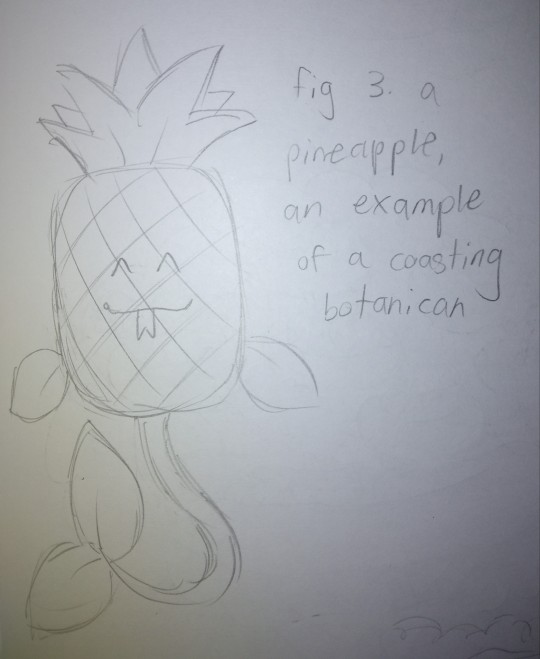
coasting botanicans have a stem-and-leaf tail and two leaf fins (fig 3); they grow on land but live the majority of their lives in the water, where they spend their time in groups. these groups are more based on friendship ties than familial ties, considering how vast a domain these botanicans have (basically the entire aquatic realm). more so than others, coasting botanicans connect with botanicans of other species and categories, and spend most of their lives just exploring and meeting others. while usually surrounded by others, a coasting botanican might on a rare chance find themselves alone in the ocean, in which case the loneliness will cause them to act in a way abnormal for most of their category - they will become antisocial and will lose their desire to explore. there are few cases of this occurring, however, given how populated and lively most corners of botanica's waters are.
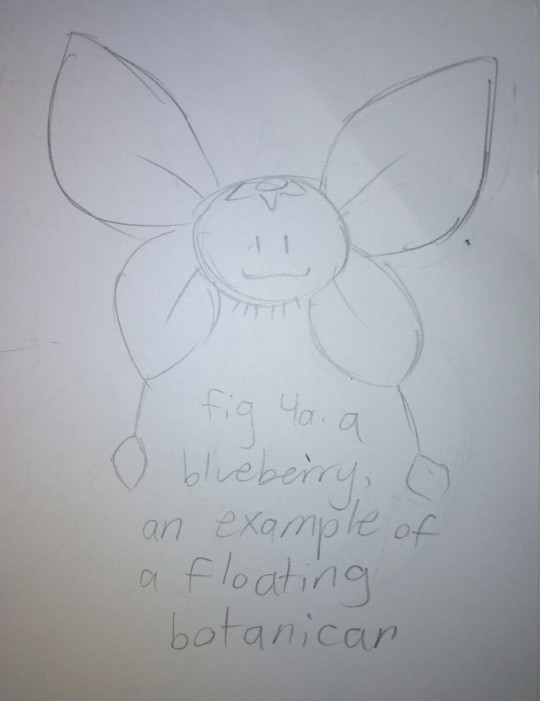
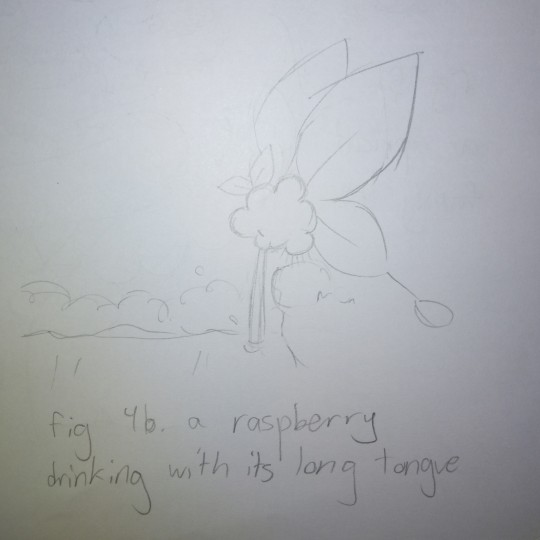
floating botanicans have four large leafy wings and six tiny stem feet (fig 4a); they are the most solitary of the four categories, being very individualized. they have a very strong connection to flowers, which they in fact pollinate - many cultivate their own gardens and end up specializing in a specific type of flower. floating botanicans can be very social at times, and often come together to form collaborative gardens and even breed flowers, but they do not live in groups. these botanicans, being so much smaller than the others, can often not safely drink out of rivers or lakes without falling in, and so have evolved a long root tongue to drink with (fig 4b).


soaring botanicans have two large, leafy wings and two stem talons (fig 5a); they tend to live in very large familial flocks, as fruit trees often produce mass amounts of botanicans. the first to ripen is usually the leader of the flock. these botanicans build nests in their family tree (get it?) using fallen sticks, branches, and other plant materials, which becomes the center of life (fig 5b). within a flock of soaring botanicans, many individuals are designated to explore the surrounding area for interesting additions to the nests (such as a foreign flower or a pretty rock). due to the large size of these groups, most individuals within a flock form a "twin" bond with another individual, which they spend more time with than others.

i don't think i ever came up with a name for the soaring-coasting subcategory, but in any event, these botanicans have a single broad leaf tail and two stem talons (fig 6). these botanicans are more closely related to soaring botanicans than coasting botanicans, but as they tend to live in more watery areas, they have many similarities to coasting botanicans and do not have the capability of flight. botanicans of this category live in large flocks in ponds, lakes, and rivers; many build small dams. unlike those of the typical flock of soaring botanicans, individuals within flocks of these botanicans tend to intermix more; they often make friends between flocks and so there seems to be some kind of broad botanican network from pond to pond, river to river, lake to lake. these botanicans, like coasting botanicans, are very friendly and carefree.
botanica is a peaceful, happy planet; basically every resource needed for survival is in abundance and there is no opportunity for greed and selfishness to even arise, so individuals are more often than not cooperative, kind, and generous. of course, as loss and loneliness are truths of life, no botanican life is free of all suffering altogether, and issues can arise - but given the warm, compassionate nature of the surrounding physical and social environments, individuals end up living happy, loving lives overall.

something interesting about botanican life is the complete disconnect between reproduction and relationhips - seeds are only spread after a botanican passes away, and those seeds grow into plants otherwise entirely disconnected from the botanican in question; then those plants are pollinated and new botanicans grow from them. in this way, botanicans have no real concept of sex, and often fall in love with and befriend members of different species (as there is no reason why this would be an issue; they wouldn't be reproducing with them anyway) (fig 7). while plant individuals sometimes have parts of a specific sex, most have parts of both sexes, and either way this has no impact on the mindset or behavior of the botanican as a whole creature (they technically have biological sex but they have no gender).
...so yeah, here's my silly fruit world!!! there's a lot of stuff left to talk about (with the gods of the world and everything) but this is good to start with :) i hope you like it!!!!
#dandy's doodles#botanica#osc#<- i never know if this really counts but i guess it does#this whole thing was very first created like 5 years before i even learned about the existence of object shows#but y'know there's a connection here#the reason why i love object shows so much is because i already personified inanimate objects!!#so yeah i guess this counts :)
46 notes
·
View notes
Text
I’m only gonna do this once (until i forget about this post and do it again), but here’s the deal with fruits and vegetables in my opinion:
Technically speaking, there is a botanical definition of what a fruit is, but that is not meant to be used in opposition to vegetable. So a tomato is a fruit, but that doesn’t stop it being a vegetable. Same goes for peppers (chilis) and squash.
So what is a vegetable? Well, the only strict definition says that it’s any part of a plant used for food. So all fruits are vegetables by that definition, but like, let’s be real for a second: we all fucking know what’s a fruit and what’s a vegetable for the most part, right?
Like, a savory thing is a vegetable and a sweet thing is a fruit. Sure, there are some edge cases that seem weird or can be debated, but like, you get the point!
A vegetable is a vegetable that we treat like a vegetable and a fruit is a vegetable that we treat like a fruit.
It’s not a rigorous definition but that’s ok because it’s all about understanding the context and what is meant.
P.S. I think tomatoes get the short end of the stick being called vegetables because we bred the sweetness out of them by selecting for other traits including redness (so much for the fucking pomo d’oro), but like even with them tasting like vegetables now, we still cook them like fruits.
Like try replacing a tomato in a recipe with a carrot and then try replacing it with a grape and tell me which one worked better. Replace grape tomatoes in a salad with grapes, and it gets sweeter, but the grapes serve the same purpose. Replace the tomato sauce in pasta sauce with grape, and you might not like how sweet it is, but it’ll probably still work, I bet (admittedly untested).
I feel similarly about peppers (chilis), but I do admit that sometimes peppers, especially green bell peppers, are used in more of a vegetable way.
P.P.S. My dad’s personal pet peeve is when everyone shares the fact that green bell peppers are just unripe red bell peppers. It bugs him because technically, they typically grow specific varieties for the green ones that work better for harvesting them green.
I always argue that green peppers are still just a different type of red pepper not ripe and red peppers are just a different type of green peppers ripened. But he feels that the fun fact is flat out wrong because they use different varieties in practice.
2 notes
·
View notes
Text
As a resident brown thumb, and beginner gardener I cannot emphasize enough how important it is to invest in perennials.
Yes it takes longer for a perennial plant to mature, (about 2 to 3 years if it's in a pot) but you can definitely grow annuals while you wait and won't even notice, I am TELLING you it is so so worth it guys trust me.
You'll have Fruits/nuts/berries/herbs/leafy greens for years to come after one install and very minimal upkeep.
Perennials also tend to be hardier and more forgiving when it comes to beginner gardener's in my experience as well.
My method is to always purchase 1-2 perennial plants On Sale for every 5-8 annuals i plan on growing that year. It may be a little expensive if ur just starting out, so 1 perennial + 3-ish annuals would suffice.
Plants do well when they're companion planted so it saves u time, energy, and pesticides to get recommended combinations.
My first year didnt count, I only planted a solid block of irish potatoes of the same variety. It was a plague of bugs and disease. Don't do that, always get Companion Plant combos.
So let's go over a 4 year garden plan to get an idea, when you know what you're doing.
The 1st year I started with: a blackberry bush kit. The kit had 2 blackberry plants in it, I got it from Sams Club. I planted them in cheap plastic pots.
-a grapevine kit (Red seedless and Concord pair I also from the same Sams club). I didn't know what a mycellium network was so I thought the roots molded and threw them away, I still feel the sting from that waste but i was able to buy a Disease resistant grape variety online and plant it in the same pot. But dont be like me.
-And for my annuals that year I went with a salsa garden combo kit (peppers, cilantro, tomatoes, basil) that I got from Lowes. I harvested the salsa ingredients that whole summer.
-The second year
i bought an Italian plum tree, and for my annuals, I planted a Salad kit.
By that time, the Blackberries were mature and I was able to harvest blackberries for the first time.
This year, the 3rd year I've expanded my kitchen garden to include a salsa garden, and the 3 sisters combo (squash, beans and corn planted in the same place).
The grapevine I planted is now mature and will give me grapes in the late summer.
I'm on my second year of blackberries.
The Plum tree will be ready next year. And I haven't decided on what to plant yet.
The fourth year It will probably be a greek salad combo kit (tomatoes, red onion, basil, parsley, garlic) with a tea garden kit (rosemary, lemon balm, chamomile, lavender, mint). By this time My plum tree will be mature and I will harvest my first year of plums, my third year of blackberries, and my second year of grapes. And for my two new perennials, I will go with two apple trees for $10 each online.
By That Time I will harvest my 3rd year of blackberries, my 2nd year of grapes and my 1st year of italian plums.
So that's how it works!
Grapes, blueberries, raspberries and blackberries are cheap and widely available from big box stores during planting season, whereas fruit trees are cheaper and healthier when ordered online outside of planting season but pre-ordered for the next year, in my experience.
(this could be berry bushes, a fruit tree, a nut tree, a fruit vine, or a perennial herb you just have to shop around) They mature faster when you plant it in a pot, and you grow however many annuals you want that growing season.
I'm so focused on the routine spring radishes and summer tomatoes, that two adhd business days (seasons) later and boom
"now I have fresh blackberries this season too."
"Oh what's this? Now I have grapes to go along with this year's harvest"
COCAINE can't beat that high, check your growing zone and buy that f*cking dwarf tree.
21 notes
·
View notes
Text
Hello hello~
I've got some garden pic updates :)
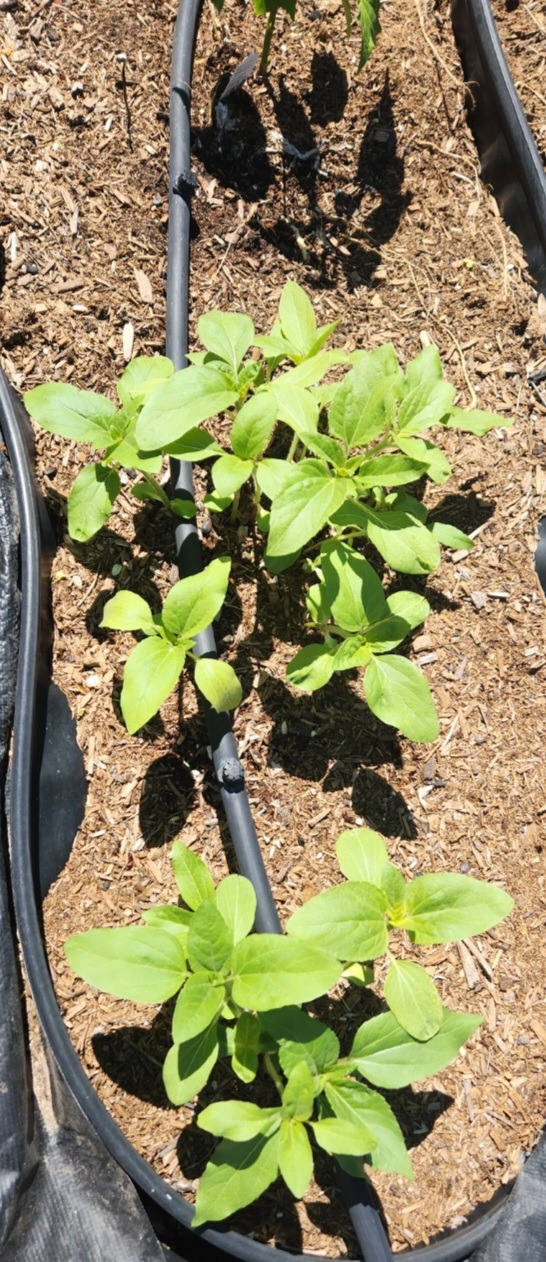
New sunflower patch, I'm only doing a small patch here as It's to tide over till I get some more scaping/zoning planned up. These are from 4th gen mix seeds (I got them from some friends and classmates)

Same row, I purchased some jalapeno starts as the peppers I seed started are still super small currently.
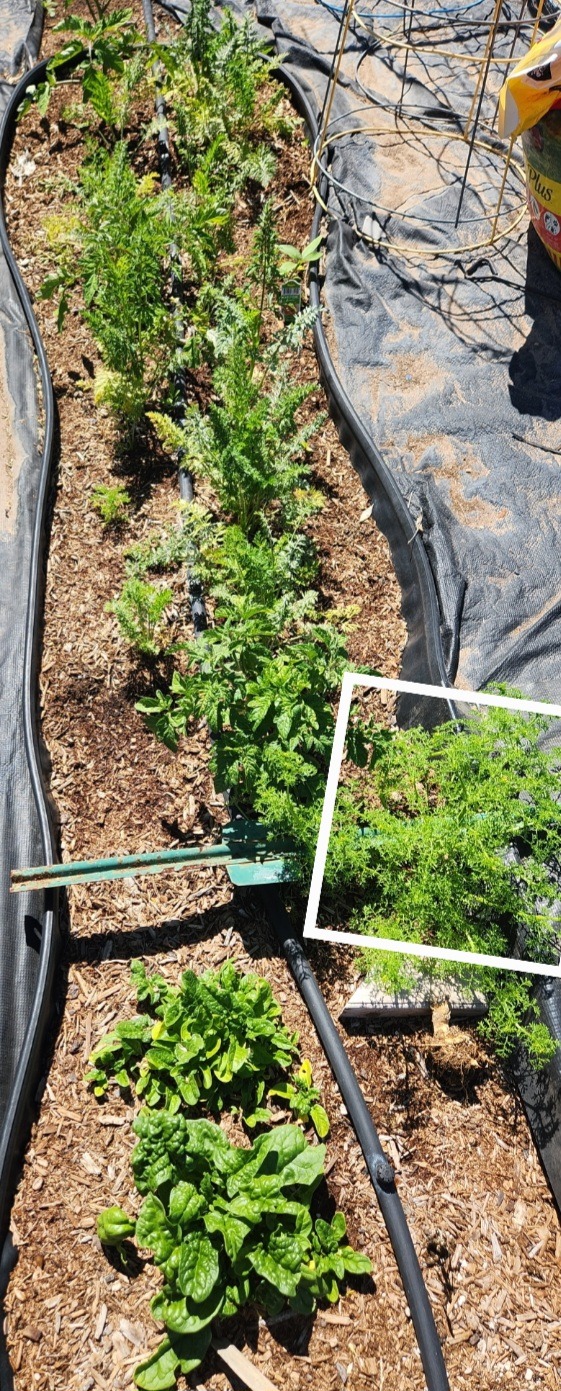
Same tows, some super late starting spinach. I'm letting it grow to see if I can see what seeding for spinach is like and share that with you all :)
In the white line/square is a wild seeded chamomile plant. I pulled it and gave it to the chickens as a treat.
Further up is the remaining carrots and some tomato starts we purchased, now interplanted with them. There's 2 slicer types and a grape variety. I don't remember offhand if they are determinate or indeterminate. Unfortunately the ones I seed started died off once they were returned outside.
:( thankfully we've all agreed to go light on tomatoes this year due to that.
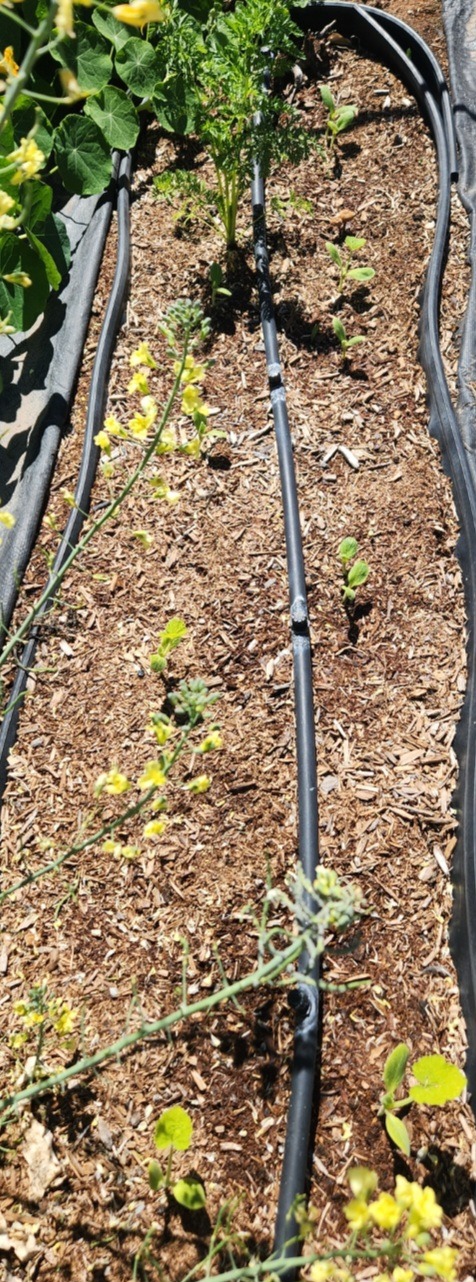
In ground some direct seeded squash, these are a patty pan/Starburst variety and a couple zuchinni. With luck this year we avoid the squash bugs!

The direct seeded nasturtium in the back and front is careless wildseeded chamomile (I swear it's the best way to grow it and will be sowing another patch like this)
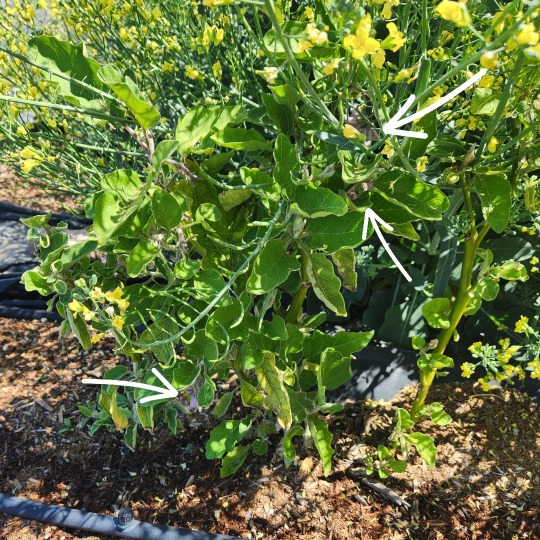
The few eggplants I've left for now have flowers, pointed to by the white arrows.
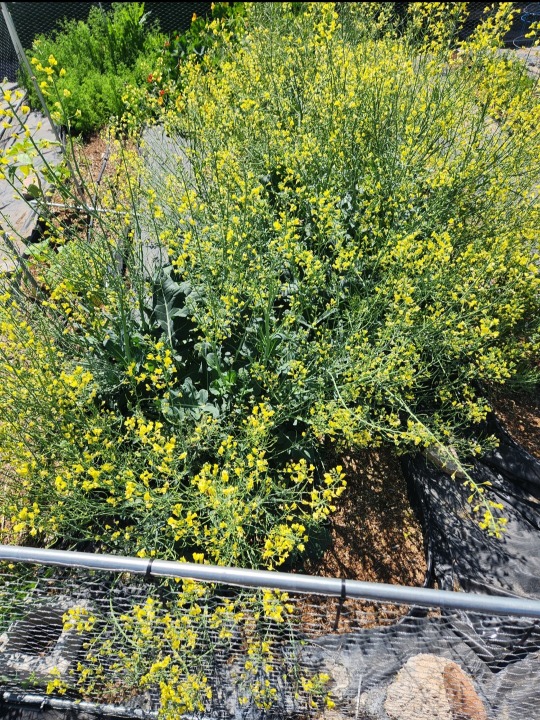
And the broccoli currently, the seeds aren't ready quite yet, but I pulled a pod the birds got to to check them, still pretty green but the seeds are of good size. Still lots of lovely flowers for the various pollinators of the area. Unlike carrot flowers, broccoli seems to attract mostly bees (the honeybees) I haven't seen too many butterflies, moths, flies or otherwise.

Just a bee enjoying some broccoli pollen~
For pest report,
So far I've seen flies and stink bugs.
No ants, aphids and thankfully no squash bugs so far.
Beneficial bug report,
I did see some ladybird gators while doing maintenence cleanup. Some small soil roachs in a few of the beds earthworms while trimming off roots to old sunflower stems.
Mixed bugs:
What I believe to be praying mantis egg cases, I don't know how old or how new they are though.
Pillbugs in some of the beds.
Our parrot visitors have stopped coming by, unfortunatly we no longer have any sunflower heads available for them. When more sunflowers come in I hope they will visit again, or perhaps even when the hollyhocks start seeding. Plenty of the smaller birds of the area still visiting though. I find the thought they might get broccoli seed and wild seed it elsewhere very funny.
This week I plan to work on getting a water line in and some more deep beds set up for growing more sweet potato vines/spuds. As well as getting some melon seeds direct seeded if I can (I may need more soil first to refill the bed).
Started some new spuds to vine for the sweet potato's and ordered some sunchoke tubers and seeds to start out some new herbs/spices and teas.
That's it for today's post and update 😊
🌱🌻Happy homesteading and Urban Farming🌻🌱
3.21.2024
#homesteading#self sufficient living#thestudentfarmer#studentfarmer#self sufficiency#food#garden#gardening#low waste#chickens#urban green spaces#urban biodiversity#urban homesteading#urban gardening#human right to clean food#right to grow food#food waste#food is a human right#herbal#garden pests#chamomile#tomato plant#broccoli grow cycle#broccoli plant#sunflowers#carrot#seed saving#plant growth#plant development#food desert
4 notes
·
View notes
Note
5, 9, 13?
Thank you for the ask!
5) What is the cheapest meal that you prepare?
That's a good question... I don't know exactly how much my meals cost since I'm not living alone and therefore meals and groceries are shared. But I'd guess borscht as you just need some potatoes, tofu, beetroot, cabbage, onions, beans, soy sauce and a big spoon of vegan sour cream/non-sweet yogurt as topping. Can be made in a big pot that will fit several servings.
9) Do you eat more vegetables and fruits now that you're vegan?
Oh yes. I still struggle with fruits because I can only enjoy them when they're really fresh so if like, an apple, grapes or a kaki is starting to get softer I have a hard time eating it. Also they mold so quickly and I prefer taste-wise exotic fruit a lot over local fruit but they are quite expensive here. Other fruits I really like are so much effort to peel and messy, like grapefruit and pomegranate. I'm trying to substitute my lack of fruits through smoothies and vitamin drinks lol
I eat so much more vegetables now and I'm very happy about that. My diet consisted mostly of spagetti, frozen pizza and sandwiches (made in a sandwich maker with salami and cheese) before I went vegan. Vegetables are so tasty.
13) Do you grow any of your own food? If so, what? If not, what are you planning to grow?
Unfortunately I don't really have the space or skills to grow something myself but I and my roommates are planning to try a tomato plant, leek and some berry. We do not have green thumbs but I'm positive that we will manage to get something with the right preparation.
40 Vegan Question Ask Meme
4 notes
·
View notes
Text
I think I’m going to add some chocolate vine and grapevine to my balcony garden. It’s potted, so the chocolate vine won’t be able to spread by roots and since I’ll be harvesting the seed pods it won’t spread.
So what I want to start with
Chocolate Vine
Blueberry
Strawberry
Various herbs
Various flowers
Green beans
Broccoli
Cantaloupe
Carrots
Lettuce
Sweet peppers
Potato
Tomato
Summer squash
A few flower vines
Mushrooms
Eventually I plan to include
Blackberry
Raspberry
Lingonberry
Currants
Grapes
Honeyberry
Goji berry
Gooseberry
Pawpaw (there’s a compact variety that I found. We’ll se how it grows)
Figs
Dwarf lemon
Dwarf orange
Container apple
Kidney beans
Cabbage
Cucumber
Eggplant
Watermelon
Onions
Peas
Hot peppers
Garlic
Radish
Other squash types
Spinach
Califlower
Dwarf cherry
Dwarf pomegranate
Ground cherry
Other stuff as I find it
But I’m not even starting on the other stuff til after I move next year. Cause there’s only so many plants I have a desire to move and my current apartment is a grump about having anything but chairs on the balcony and get upset with the two potted bushes I got. And I don’t want to deal with them
If you know of something particularly pretty of edible that can withstand hot summers or low light indoors that I haven’t heard of let me know. I only recently discovered chocolate vine and I love the appearance and I’m excited to try the seed pods. They supposedly smell of chocolate and taste like tapioca pudding.
2 notes
·
View notes
Photo
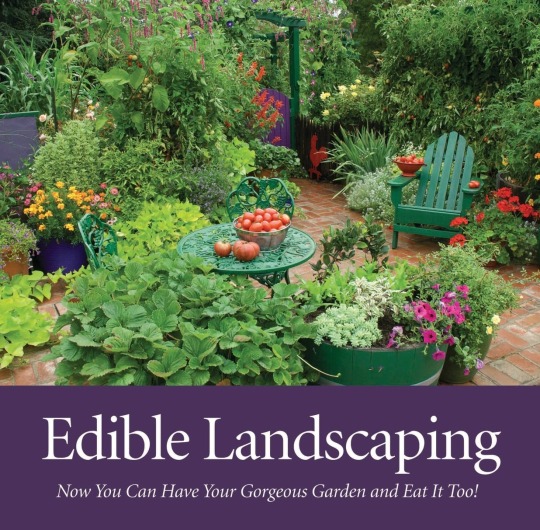
Edible Landscaping - What Is It, How to Design It and What Plants to Choose:
Edible landscaping refers to mixing food plants in with your ornamental ones, to create a setting that is not only visually appealing, but productive as well. This post will provide suggestions for How to Design It and What Plants to Choose. Edible landscapes are nothing new, with the Ancient Egyptians being one of the first to create gardens featuring flowers, grape vines, and fruit trees, mixed with seating areas where one could enjoy the scenery. In the 10th century, the rose gardens that were sprinkled with fragrant herbs became a signature creation of Benedictine monks. Examples include:
Using different types of loose-leaf lettuce as border plants
Creating a hedge from blueberries or currants, rather than unproductive shrubs
Replacing non-edible trees with fruit trees
Using tomato plants or grape vines, instead of conventional climbing vines to cascade over a trellis
Having pots and baskets of colorful, fragrant herbs, rather than non-edible flowers
Incorporating striking vegetables, such as Swiss chard and pak choi, into flower beds
Using strawberries, thyme and mint as ground cover
Resources: Design Suggestions and What Plants to Choose YouTube Videos Edible Landscaping by Rosalind Creasy 20 Plants to Grow for Calcium [Reference Link]
[14-Point Emergency Preps Checklist] [Basic Emergency Kit] [Immediate Steps to Take When Disaster Strikes] [Learn to be More Self-Sufficient] [The Ultimate Preparation] [P4T Main Menu]
This blog is partially funded by Affiliate Program Links and Private Donations. Thank you for your support.
#prepare4tomorrow#prepper#survival#shtf#diy#food#garden#landscaping#edibleLandscape#5six7#redneckGardening#homesteading#prepping#survivalist
3 notes
·
View notes
Text
Nature Interpretation & Science
This week we focused on nature interpretation through science. Now, this is something I am more familiar with as I am a student studying both biology and psychology. To be more specific, I have studied nature in ecological contexts throughout my time as a Gryphon. There are many ways that we interpret nature through science, whether that be the process that take place in nature or the patterns and relationships that take place. For example, gardening can be seen as a specific science known as botany which focuses on plants and their genetics and environment. Gardening is something I myself do not take part in, but my grandpa as I have stated before is consumed by gardening and crops. Since I was a little girl our home in Bosnia is surrounded by grape vines, cherry trees, figs, tomatoes, watermelon, etc. When I get there, all the hard work is already over and it is just harvest season. I did not witness the extensive work that was put into the proper growth of a crop. For example, in order for a fig to grow properly, the company of female bee’s is significant as they lay eggs inside the fruit in order for the fig to ripen. Sometimes, we have a habit of just looking at our surroundings in nature, but not understanding how these things come to be. Whether it be from a continental drift, a seed that grew into a tree, or a burrow that is a home to a groundhog. Another example that I would like to touch on is a waterfall that is right outside of my home in Bosnia. The waterfall/water is called Duman and according to my family it has always been there. It is one of the main water sources in Livno and is the best drinking water.
Even though Duman was not manmade, it is up to the people who visit and native people to the town who choose to keep it clean and take care of it. In other words, science is the explanation for the waterfall or magic as some may believe. Almost everything that exists has a reason for existing and can be explained through science, whether that be people or the reason for the weeds growing on your grass. Sometimes this can be evident when looking at a tree in a forest, it may have a spotted or moldy texture to it as it was affected by a fungus or disease. That can happen to things in nature just as it happens to us. Lastly, I want to make mention the relationship that humans and nature have with one another. When you look at a numerical scale of the human and of a plant, there are many similarities that we share. Whether it be the need for oxygen or the similar epidermal layer under a microscope, we would be unable to exist without nature. Thankfully, us humans are able to understand some of these similarities, differences, benefits, and precautions
2 notes
·
View notes
Text
f) it's a lot easier for an online shop to take your money, send you nothing in return, and vanish into nothingness
g) fucking idiots never seen farmers' markets
ramble incoming:
companies shipping big ass lots of produce is not completely universal. It's common, but no.
There are still farmers out there who grow their plants around my town, harvest it, and within three days at most, come to the town market to sell it. It's as fresh as it gets if it's not you yourself growing and picking it.
There are artisans, farmers, beekeepers, bakers who do this. That is how I get grapes and tomatoes.
I don't think these people could afford actually shipping everything to everyone. It'd be a logistical nightmare, and many would refuse to buy, because on markets, you don't just buy, you touch and look at the stuff.
every time I hear someone say “we should just get rid of physical shops and have everything online” I get a bit angry because
a) physical shops are important for those who don’t have access to a computer/ internet/ ect
b) those “weird” and “niche” shops I love so much don’t have the same vibe online, they turn into just another website
c) I hate paying for shipping
87K notes
·
View notes
Text

Get ready for a fun weekend of farmers market grocery shopping because the biggest food holiday of the year arrives next Thursday! Thanksgiving marks a time to gather with family and friends to express gratitude over a feast of turkey and other traditional New England foods. But, while you’re busy preparing the main meal, your guests will need a little something to whet their appetite. Here are a few ideas for tasty yet simple Thanksgiving appetizers that you can make with ingredients sourced at your local Down to Earth farmers market this weekend.
It's a Stickup! Featuring plenty of seasonal flavor, with pretzel sticks as edible toothpicks for ease-of-handling and no fuss cleanup, these maple-glazed sausage bites are sure to be a Thanksgiving crowd-pleaser. The glaze delivers the coup de grace with its irresistible combination of sticky sweet maple syrup, earthy, herby crumbled sage and tangy stone ground mustard.
Ingredients: Makes 16 sausage bites
⅓ cup Maplebrook Farm maple syrup
1 tbsp stone ground mustard
½ teaspoon dried, crushed sage leaves
12 oz Goode and Local By Don Rodrigo, SOVA Farms or Stone & Thistle Farm cooked sausage
16 pretzel sticks
Instructions:
Preheat oven to 375 degrees F.
In a small bowl, combine maple syrup, mustard and sage.
Cut sausage into 1" slices. Place on a rimmed baking tray.
Bake sausage for 8 minutes. Brush generously with maple glaze. Bake for an additional 8 minutes or until sausage is heated through.
Insert a pretzel stick into each sausage bite for easy serving.
Enjoy!
We’ll Always Have Brussels Brussels sprouts are currently in peak season as this winter vegetable grows best in cool or lightly frosty weather. You can often find Brussels sprouts being sold on the stalk in our farmers markets–just the way nature intended and eliminating the need for any excess packaging. Simply twist the sprouts until they break away from the plant.
These “mini cabbages” are considered nutritional powerhouses as they are high in fiber, potassium, and folate, and are an excellent source of vitamins C and K. They also contain antioxidants and minerals like calcium, iron, and magnesium.
There are many fun holiday appetizers you can make with these cruciferous cuties. Anything with bacon is sure to be a hit, so try whipping up these bacon-wrapped parmesan Brussels sprouts. You probably have most of the simple ingredient list in your pantry already, so pick up a pound of Brussels sprouts from the farmstalls and bacon from Goode and Local By Don Rodrigo and give them a whirl! Or how about these adorable sliders that substitute sprouts for the buns?
If you’re hoping to up the ante with your Thanksgiving appy or just discover a delicious new way to serve Brussels sprouts on any occasion, look no further than this vegetarian recipe. You’ll want to select the largest sprouts available and grab some whole milk ricotta from Maplebrook Farm before they sell out. Also, be sure to watch this short and very helpful instructional video before getting out your paring knife.
Pro Antipasto? Italy’s answer to France’s charcuterie boards, antipasto platters feature an array of classic Italian delicacies including cured meats, cheeses, marinated veggies, olives and bread. In addition to spreading antipasto across a large platter, it can also work great hors d'oeuvres-style when threaded onto individual toothpicks or skewers.
To assemble your antipasto skewers, thread from bottom to top: 1 Dr. Pickle pitted olive of any kind, 1 marinated Maplebrook Farm ciliegine, 1 fresh basil leaf, 1 cherry or grape tomato, 1 slice Goode and Local By Don Rodrigo cured meat (fold over once or twice before threading), 1 Dr. Pickle marinated artichoke heart quarter, 1 Dr. Pickle roasted red pepper slice (fold over once or twice before threading), 1 basil leaf, 1 olive, and 1 small piece of Wave Hill Breads or Orwashers Bakery baguette. Arrange finished skewers on a serving platter.
Sleek As a Leek Party Dip A member of the allium family which includes onions, scallions, chives and garlic, leeks are a fall and winter crop that can be harvested even after it starts snowing. Leeks need to be cleaned thoroughly before using because dirt can get trapped between the layers of leaves. To clean, halve the leeks lengthwise with the root still intact, then run them under cool water.
It’s not a party without a dip and, with only five ingredients, this melted leek dip is the gift that keeps on giving! While making your farmers market rounds, look out for crunchy veggies like carrots and celery and freshly baked loaves that will work great for dipping.
Ingredients:
6 tablespoons SOVA Farms unsalted butter
4 large leeks from the farmstalls, white sections only, halved, and thinly sliced into half-moons
1 teaspoon kosher salt, plus more to taste
½ teaspoon freshly ground black pepper
1 pint full-fat sour cream
Crudités, Norwegian Baked LLC crackers, or toasted Wave Hill Breads or Orwashers Bakery baguette (for serving)
We hope these appetizing appetizer ideas got you primed and ready for Thanksgiving farmers market shopping this weekend. As always, our farms and food makers will have an array of freshly harvested, regionally grown and locally produced goodies to help complete your shopping list and fill your reusable shopping bags. We look forward to seeing you there!
#downtoearthmkts#farmersmarket#buylocal#shoplocal#eatlocal#local food#thanksgiving 2024#Thanksgiving appetizers
0 notes